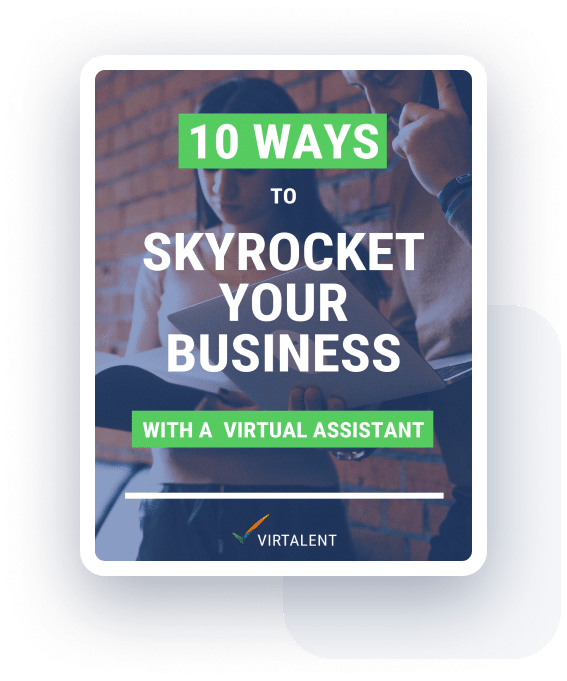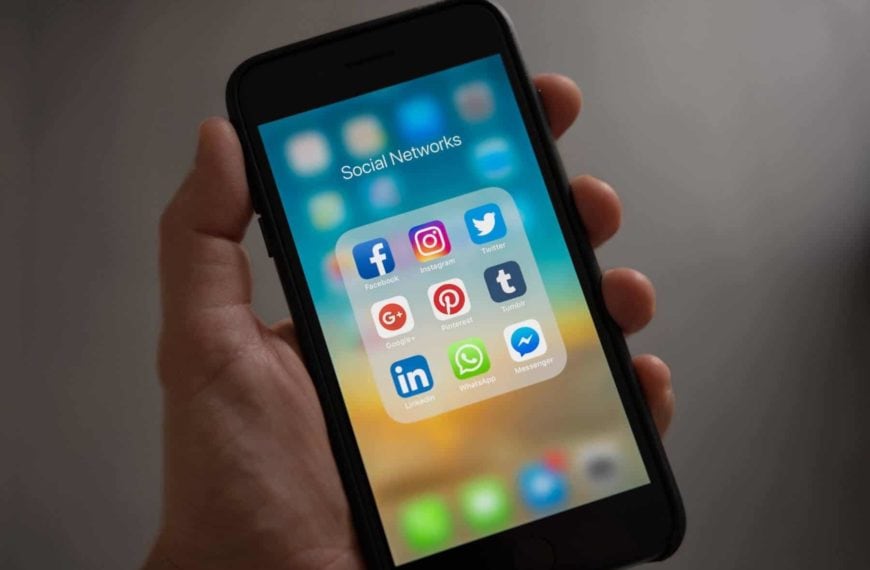Recently we’ve spoken to a lot of small business owners who are great at selling their product/service, but struggle to recruit the right salespeople or understand whether their marketing partners really know what they’re doing. Why is this? Simply because they don’t understand some of the basics about sales themselves. Perhaps you’re one of them, perhaps not, but we hope to give you some helpful hints and tips over the coming months in a series of blog posts about that dreaded word… SELLING!
Let’s start with understanding sales leads.
Sales leads
First off, what are “leads”?
Well, sales leads represent the first stage of any sales process. Without leads you aren’t going to get very far. A sales lead is either a specific person, a consumer visiting your website for example, or it could be an organisation, which is especially applicable if you are selling business to business (b2b).
If your sales leads are in the form of companies or other types of organisations such as a local town council, you should make sure to identify the decision-maker or group of decision makers in that organisation as, at the end of the day, they are going to be the ones that will actually make or break the deal.
Leads can vary all the way from “cold” to “hot”, with the “hot” end of the scale being the best, most valuable leads to you as they are much more likely to be converted from leads into actual sales. You could say that the “hotter” a lead is, the more ready they are to agree on the sale.
Cold leads
Cold leads are prospective customers or clients that you have NOT contacted before. They have never shown any interest in what you are offering, either because they are unaware of you or, even if they are aware that you exist, have never felt compelled to reach out to you. Converting cold leads is obviously quite hard as a result, but don’t fall into the trap of only relying on warm or hot leads as you WILL eventually run these down! In some industries, particularly those based on new or emerging technologies, you may also find that most of the leads you have to contact are cold simply because they haven’t been “educated” about your product, or for that matter any of your competitors. Take the Virtual Assistant industry, for instance. In the past, we at Virtalent have cold-called a lot of small business owners to tell them about the services we offer at Virtalent, but, guess what there first question is a lot of the time?
“Erm, what exactly is a Virtual Assistant?”
Sometimes we have to “educate” our leads so that they understand exactly what we’re offering. Then we can explain why we’re the best supplier of Virtual Assistant services out there. You can see with this example that this does differ a little from following up on cold leads that understand your product. It takes a lot of work to “educate” your clients, but then again we’re the first Virtual Assistant company in our industry to reach out to them. Imagine you are the client on the phone to us. At some point after our conversation, you realised that the service we’re offering actually sounded like it could help your small business. Who would you call first – Virtalent or our competitors?
Of course, cold calling leads if often quite nerve-wracking, as the chance of being rejected is logically quite high! More on that later.
Warm leads
“Warm” leads are clients or organisations that have previously shown an interest in your organisation. They may have previously visited your website, responded to some of your marketing efforts in some way or been referred to your company via a friend or colleague. That said, for some reason, when they responded to your business pitch they weren’t quite ready to buy right at that moment. This does mean, however, that they are likely to be interested in your offer at some point in the future, whether that is right now or in a matter of days or months, whatever could be most appropriate to your market. Most importantly, unlike with cold leads, warm leads have demonstrated their need for your product or service.
Hot leads
Hot leads. These are people or organisations that are very much interested in the product or service you’re offering. They’ll buy right now or at some point in the very near future. These are the leads you need to find or have converted from your cold or warm leads. According to the AIDA model, which we’ll cover later on in this blog series, they have the DESIRE to buy your product, but you still need to get them to take ACTION and actually part with their credit card information. With a little discussion it’s likely that they will sign up, but don’t think that all “hot leads” are ready to make the sale. Some will be, some won’t be.
Generating and qualifying leads
Some of you may be thinking, that’s all well and good, but where do I find these leads in the first place?
“Generating leads” is a topic we’ll cover in more detail later, but for the moment we just wanted to explain what we mean by that. By the way, another name for “leads” is “prospects”, i.e. they are people that will prospectively buy from you.
Generating leads essentially means finding the right people to make contact with below. They may well be anything from “cold” to “hot”, but you need to find them in the first place. Typically, once you’ve found them, you’ll either make contact right away (to qualify them) or store them in a database ready for you or someone else on the team to call later. You might generate leads from a directory of some kind, a mailing list you have paid for, by trawling through the web looking for people talking about the need they have for your product (this is where social media can be great) or from a list of your own contacts that you’ve generated through networking, the ways to generate leads are almost endless, but we’ll try to cover most of the important ones shortly.
Qualifying leads is a process when you work out exactly how interested – how hot or cold – the leads you have generated really are. This is the job that appointment setters and most cold-calling staff do in large sales organisations, before they pass on the better quality leads on to the sales team. They act as a kind of “filter” so that the higher paid, better-trained and more persuasive members of the sales team can focus on talking to people that are actually likely to buy from them. In a smaller organisation, this is likely to be your job as well. Qualifying leads can be a long process filled with rejections. Just because you have all of these names and numbers in a big database, it doesn’t mean that they are all going to be interested in buying from you!
To qualify a lead you simply need to reach out to them and initiate a discussion. Through this dialogue you need to try to understand what the prospect’s needs are and then see if you can offer them a solution. DO NOT simply call through the list trying to sell your product or service without thinking carefully about whether the customer actually has a need for your product. Take an ice cream parlour as an example. No one managing an ice cream parlour has a need to cut grass, so, no matter how hard you try, they will not be buying one from you. You can be as persuasive as you like. If they don’t have a need for your product, then they will not buy it. Ever. If you do sell lawnmowers you need to first assess the needs of the lead you are generating, before contacting them. The ice cream parlour would hopefully not be on your list in the first place, but if it was, you needed to have assessed the need of that business right away when you contacted them, not after a long sales pitch. You are just wasting time (both yours and your potential customer’s).
Gatekeepers
A word of warning, qualifying prospects isn’t as easy as you may think. Want to know why? Gatekeepers. For some reason, it’s always easy to imagine a “gatekeeper” as a security guard or soldier guarding a doorway and, well, that’s essentially who they are. A gatekeeper is someone you must get past before you can even think about speaking to the prospective customer you have on your nice little database. They will stop you dead in your tracks and most likely send you heading for the door. And don’t think they’ll tell your prospect that you called, because they won’t! These gatekeepers are well used to dealing with sales calls and most certainly won’t be making a report of their favourite ones and handing it to your busy prospective client. One of the main reasons that he or she employed that gatekeeper was to protect their valuable time.
Most of the time gatekeepers are secretaries, PAs, Receptionists or lower levels of management – a Marketing Manager will likely pick up a phone or be sat outside the office of a Marketing Director, for instance. Sometimes, especially in a small business, they will simply be employees lower down in the food chain. Have you ever tried speaking to a manager when someone in a customer services team has told you that they won’t be issuing you with a refund? We know we have, and it’s a very similar situation. The problem with gatekeepers only gets worse the larger the organisation you are trying to contact is.
Don’t despair though, we’ll give you a few tips about getting around gatekeepers a little later on. (Hint: this is where you really have to think, “how can I speak to a potential client without his gatekeeper stopping me?”).
USP(s)
You probably know this one, but we wanted to draw attention to it anyway as surprisingly it’s often forgotten.
Your USP is your “Unique Selling Proposition”. The emphasis here is on the UNIQUE. If you are calling prospects and trying to get a sale, you need to tell them all about your business and the ways in which it is UNIQUE! Why should they buy from you and not one of your competitors?
Perhaps you can deliver in a much shorter timescale, perhaps your team has years of industry experience or perhaps you offer unrivalled customer support? Think about the unique aspects of your product or service that your customer can benefit from when buying from your company.
I know it sounds simple, but having a handful of USPs or even one really strong central USP, which you ensure is at the forefront of all of your marketing and sales messages, really is key. You need to make sure that your prospect will remember your company for the right reasons and also be convinced that what you are offering is better than the competition.
Opening and closing
Again, this might seem straightforward but the opening and closing of a sales conversation are not only the most testing parts, but also the most crucial.
“Opening” refers to the way you begin the conversation with your potential client. Usually this takes place over the phone, but it can also be over email, live chat, or any other method of communication that you can think of really! Of course, when you haven’t yet had a chance to gauge the interest of your potential client in your product/service (or even their mood), opening a sales conversation can be tricky. Don’t worry. Make sure to introduce yourself, explain why you are calling and then give them a chance to say something in response. Unfortunately this is likely to be followed by a “sorry, I’m too busy” or a “I’m not really interested”, so you will need to be resilient and think about some of the sales techniques you could use to try to continue the conversation, and expand on what you have opened the conversation with.
We personally find it useful to have memorised a short “elevator pitch” style summary of what we can offer a prospective client, before sitting down to fill a day with sales calls. This helps bring clarity to what you are trying to achieve and lets you relax a little as you know you’ll be as prepared as you could possibly be.
In between “opening” and “closing” is the body of the sales conversation itself, where you’ll have to talk openly and honestly with your prospective client. Aim for a win-win situation, otherwise you are either agreeing to something you shouldn’t or pressurising a client into agreeing to something they shouldn’t. Neither situation is going to help you grow a profitable, sustainable, reputable business. More on this later.
“Closing”, therefore, is when you need to “close” or end the conversation. Your conversation may come to a natural close, but if not, when you’re running out of things to say is usually the best place to begin closing before you start tripping up on what you’re saying and repeating yourself. If the prospect is still not sure about committing to anything, you need to try to close the sales conversation in some way. We understand that may not involve handing over their credit card details to you right that second, but you still need to try to get them to agree to some kind of action if you can. If they don’t seem particularly convinced, perhaps offer them a free trial of your product or ask them if they wouldn’t mind you sending them some more information about your product. Hopefully some of the sales techniques we cover later on in the course will be useful.
The sales funnel
The sales “funnel” or sales “pipeline” is a useful concept to understand. At the very top, the widest part of a funnel, you have a heap of unqualified, cold sales leads that have never heard of your company. These are the people you have in your sales database, but haven’t yet reached out to in any way. The aim is obviously to try to get them to follow the sales process, down to the end of the funnel where they pay for your product/service, receive it and walk away as a happy customer. It is here where they exit the process. If you’re clever, you’ll hold on to these happy customers and try to lead them through your funnel more than once. We’ll cover more of that in a bit.
Obviously, as the prospect moves through the funnel, they may lose interest and abandon the process. In fact, out of all the cold, unqualified sales leads that entered the funnel at the very start, only around 1% will be converted into actual, paid-up customers. It is for this reason that sales is a difficult process, filled with rejection, and so isn’t something you should take too personally. Listen to the feedback you are receiving from potential customers and try to understand why they aren’t interested in your product. You will not convert everyone, but if you really are struggling to get anyone interested in your product or service, perhaps you need to improve it or change your pricing strategy.
The sales funnel also shows that the sales process involves many stages and many points of negotiation. As they pass through the funnel, the likelihood that the prospect will convert into a paying customer will logically increase (they are getting “hotter”, remember). Calculating the initial numbers entering your sales funnel and then evaluating how many of these customers drop out of the funnel at each stage, is very useful to know. Perhaps the customers are keen to purchase your product, but don’t like the payment options you provide? Perhaps they feel your sales team is too “pushy”? Perhaps the discussion they had with your delivery team, to book a delivery slot, resulted in them abandoning the process? It is important to understand whether you can reduce any leakage from the funnel and, if so, where and how!
The AIDA model
Very closely linked to the concept of the sales funnel is the AIDA model, which stands for Attention – Interest – Desire – Action. This model dates back to the beginning of the industrial revolution but is still very valid today!
So, going through the model…
Attention
“Attention” is the first step in the marketing process. You need to get the attention of your target market somehow. That might be through advertising, publicity stunts, sponsorship of events that your target audience are likely to attend, or even just by giving them a call.
Interest
“Interest” (or “Interaction” as some marketing experts like to call it) is the next stage in your sales funnel. Imagine you have just shouted someone’s name (that’s the “attention” bit) and they turn around. How are you going to stop them from just giving you a funny look and continuing on down the street? Evidently, the more interest your potential customer has in what you have to offer, the longer they will pay you some attention. Tell them about all the great benefits your product offers, tell them about how great value for money the product you are offering is. This is your chance to hold their gaze.
Desire
D is for “Desire” (or “Dialogue” as some call it) and, again, the clue is in the name. You have called someone’s name, they have turned around, they have listened to what you have to say and now you have to get them to really want what you are offering. Convince them that your product or service will satisfy their needs, and that you are the best company to buy from.
Action
Finally, the “A” is for “Action”. Hopefully, if you were persuasive enough in your selling technique, you will have ensured that your prospect will now take some action. This is the bottom of the sales funnel. In the best case scenario, your customer’s action will be to purchase something or subscribe to your service, but, if not, you still need to try to get them to request more information, ask for a quotation, sign up to your newsletter – anything that would give you a good chance of making the sale at some point in the future. Make sure to follow up on these hot leads in a timely manner, giving them enough time to consider your proposal but not enough time to buy from one of your customers!
We hope you enjoyed this post. Look out for more about sales in the near future!







